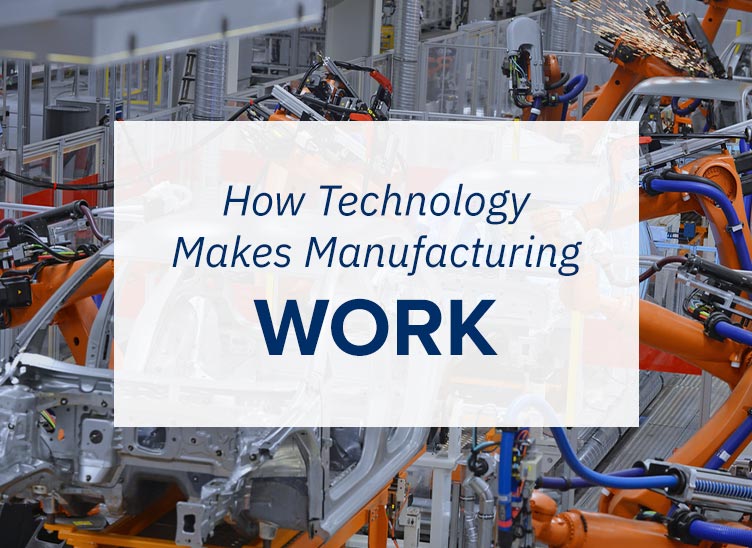
How Technology Makes Manufacturing Work
Manufacturing is the backbone of America, playing a part in so many different industries. Evidence of its importance can be found on stickers at the bottom of toys, tags on clothing, and even political discussions over the last decade. With China being a major competitor, it’s small differences that can make a plastic & rubber manufacturing company successful. Just like every other sector, technology is taking manufacturing companies and helping them become more efficient and a player in the large, global arena.
The Design Difference
The process and complexity of designing products vary between industries. Even within industries, companies often manufacture many different types of products. Traditionally, molds and prototypes are made multiple times until it is done right. With technology, the processes are reduced with programs that help designers create 3D visuals. Program inspections more easily find flaws which means less time, materials, and energy are required to create correct designs.
Another benefit of technology in design is that the programs used to create the designs can be synced to machinery. The syncing cuts out a lot of waste, streamlining the overall process. Manufacturers no longer have to spend time moving files over, inputting complex programming codes, or training workers on design details and expectations.
Adding Automation
The biggest benefit of technology and machinery is that it increases efficiency. When people are doing the manufacturing themselves or running machinery, it limits the hours that the facility is working. Automated systems are more efficient because they don’t require breaks and can manufacture different parts around the clock and every day of the year. The quality of the products is not compromised after long hours either, keeping standards high and the reputation of the company intact. With a higher production rate and high-quality products, companies can offer competitive pricing while still making a higher profit.
Automation is also great because it uses fewer materials in its production. Products that require complex designs are especially benefited by technology because fewer mistakes are made. The fewer materials that are wasted, the more money companies can save on their costs.
Boosting the Economy
Technology is the key to boosting the economy. When manufacturing companies do better, they can offer more jobs to the communities that house them. The more successful they become, the more they can expand and create more products. Some companies manufacture all their parts while others outsource small parts and help build other companies in their products too.
The items that they sell help create value, but it isn’t always the thing that gives them the competitive edge in their industry. While many people believe that things like location, taxes, and labor rates are the biggest factors in determining manufacturing success, this isn’t necessarily the case. Some of the biggest influencing factors include quality design, unique ideas, engineering, marketing, material sourcing, and customer support. There are many qualities that work together still determine if the company will be successful in the long run.
Technology is a key that many manufacturers have found to make all the difference in the way they run their companies and benefit the economy. While it may not make the only difference, it is a tool that can help manufacturers succeed in a world where cheap labor is often the compromise.
